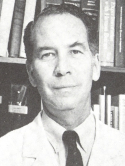Nonmammary malignant neoplasms in patients with stage I (T(1)N(0)M(0)) and stage II (T(1)N(1)M(0)) breast carcinoma. A long-term follow-up study Journal Article
| Authors: | Rosen, P. P.; Groshen, S.; Kinne, D. W.; Hellman, S. |
| Article Title: | Nonmammary malignant neoplasms in patients with stage I (T(1)N(0)M(0)) and stage II (T(1)N(1)M(0)) breast carcinoma. A long-term follow-up study |
| Abstract: | We have recently updated the follow-up of 644 women with pathologically determined stage I (T1N0M0) (474 patients) and Stage II (T1N1M0) (170 patients) breast carcinoma treated by modified or radical mastectomy from 1964 through 1970 at Memorial Sloan-Kettering Cancer Center. Median follow-up was 18.2 years with over 90% of surviving patients followed for 15.7 years. Recurrences occurred in 166 (26%) with 148 (23%) dead of disease and 18 (3%) alive with recurrence when last seen. A nonmammary malignant neoplasm (NMMN) was confirmed in 86 (13%) of the 644 patients. Of these, 55/86 (64%) were diagnosed after and 27 (32%) were diagnosed before the breast carcinoma. Four patients (5%) had a NMMN before and after the breast carcinoma. The most frequent sites of prior carcinoma were the cervix (n = 8), colon-rectum (n = 7), and oropharynx (n = 5), whereas the more common locations of subsequent NMMN were the ovary (n = 11), colon-rectum (n = 10), lung (n = 9), stomach (n = 6), and lymphoma-leukemia (n = 5). There was not a statistically significant difference in the frequency of subsequent NMMN when patients who received adjuvant radiation were compared with those who received adjuvant thiotepa or non adjuvant therapy. There was no excess of lymphoma or of other NMMN in the treated region or of contralateral breast carcinoma among adjuvant radiation treated patients. The overall hazard rate for subsequent NMMN was 7/1,000 women at risk per year. The risk was fairly stable over the first 15 years of follow-up but rose to 12/1,000 in the 15-20-year period. The observed frequency and time distribution of NMMN were very similar to the expected frequency determined by comparison with a population of age-matched women. Most fatal NMMN arose in the ovaries, stomach, pancreas, and lungs. There were 35 deaths due to NMMN detected subsequent to the diagnosis of breast carcinoma (15% of all cancer deaths and 64% of 55 subsequent NMMN). In this series, subsequent NMMN were as frequent as contralateral breast carcinoma, and they were responsible for seven times more deaths. Hence, an important goal of any follow-up program for breast cancer patients should be the early detection and treatment of NMMN. |
| Keywords: | major clinical study; adjuvant therapy; follow up; ovary cancer; thiotepa; colon cancer; breast carcinoma; second cancer; human; female |
| Journal Title: | American Journal of Clinical Oncology |
| Volume: | 12 |
| Issue: | 5 |
| ISSN: | 0277-3732 |
| Publisher: | Lippincott Williams & Wilkins |
| Date Published: | 1989-10-01 |
| Start Page: | 369 |
| End Page: | 374 |
| Language: | English |
| DOI: | 10.1097/00000421-198910000-00001 |
| PUBMED: | 2801596 |
| PROVIDER: | scopus |
| DOI/URL: | |
| Notes: | Article -- Export Date: 14 April 2020 -- Source: Scopus |
Altmetric
Citation Impact
BMJ Impact Analytics
Related MSK Work






